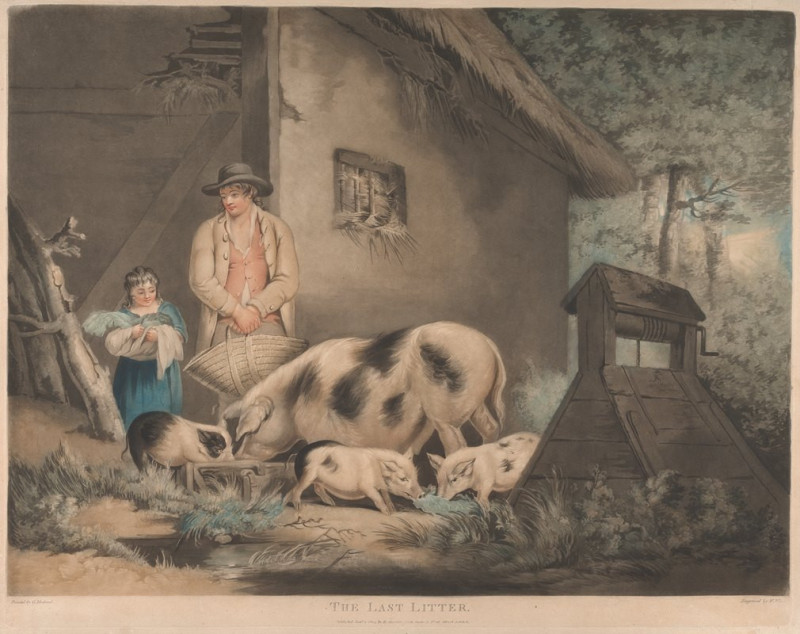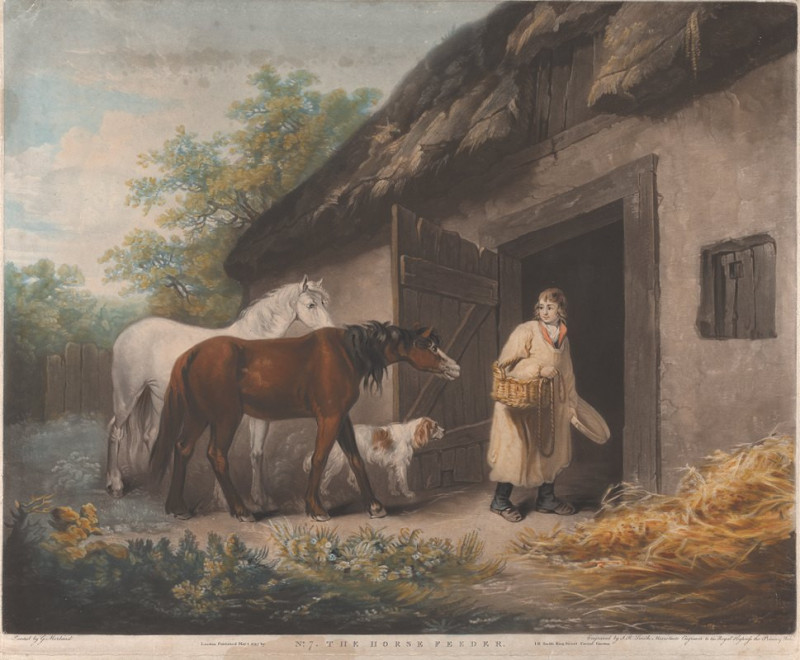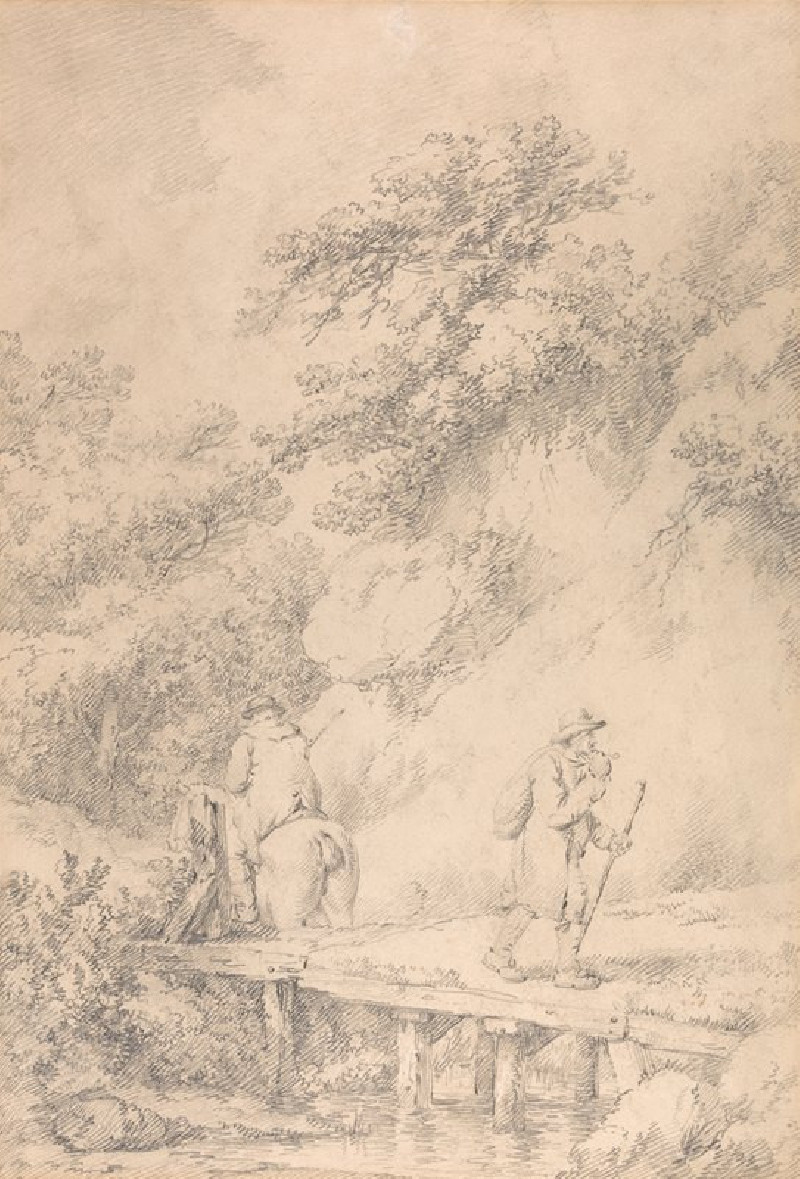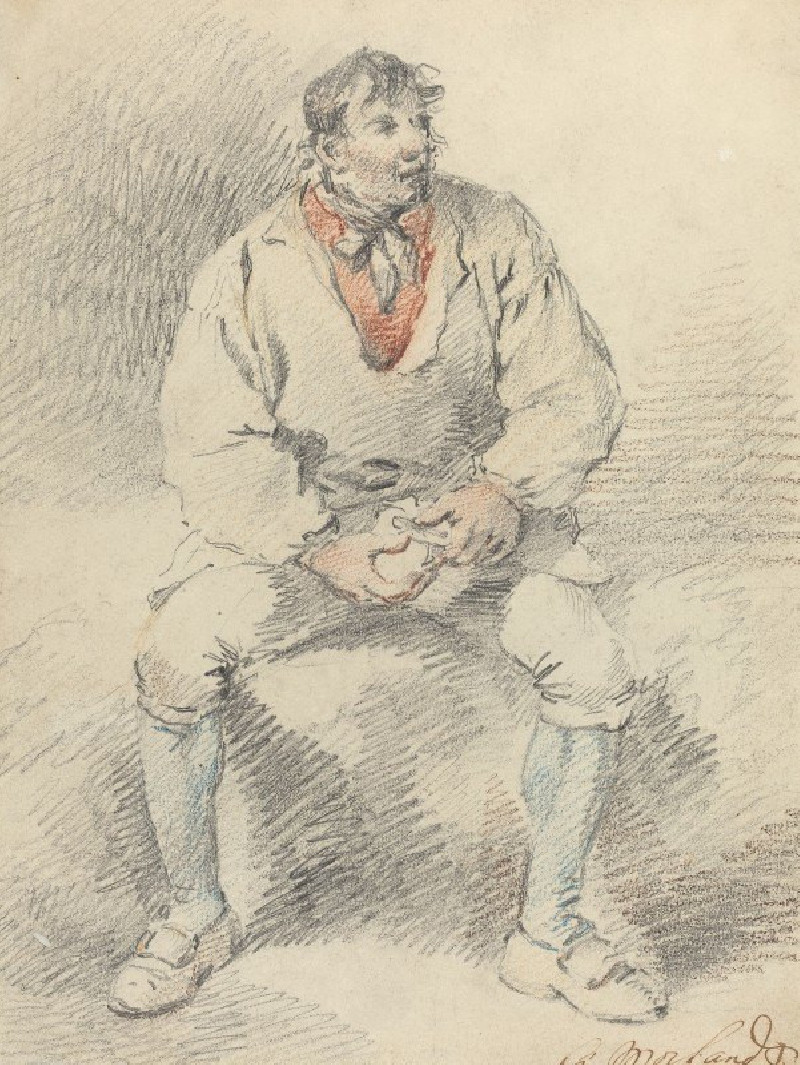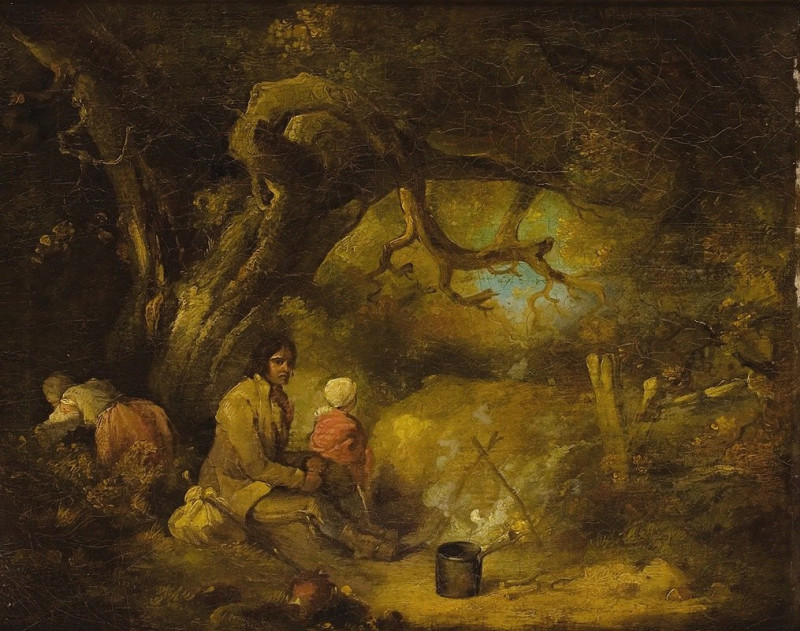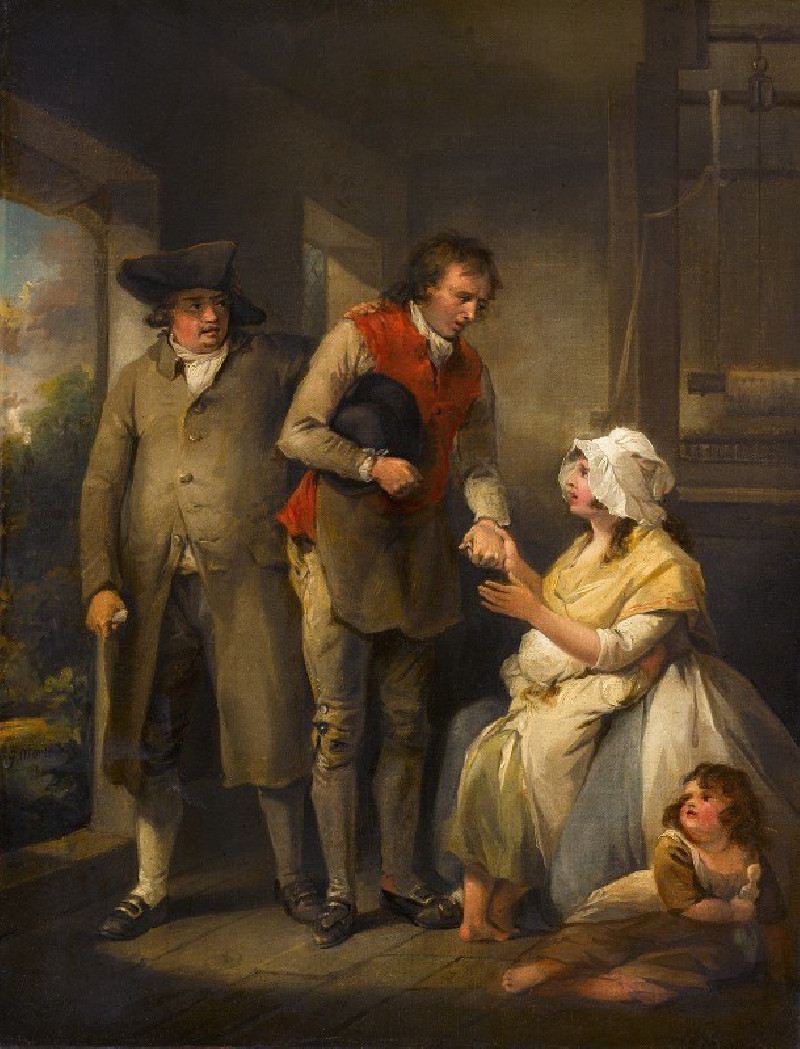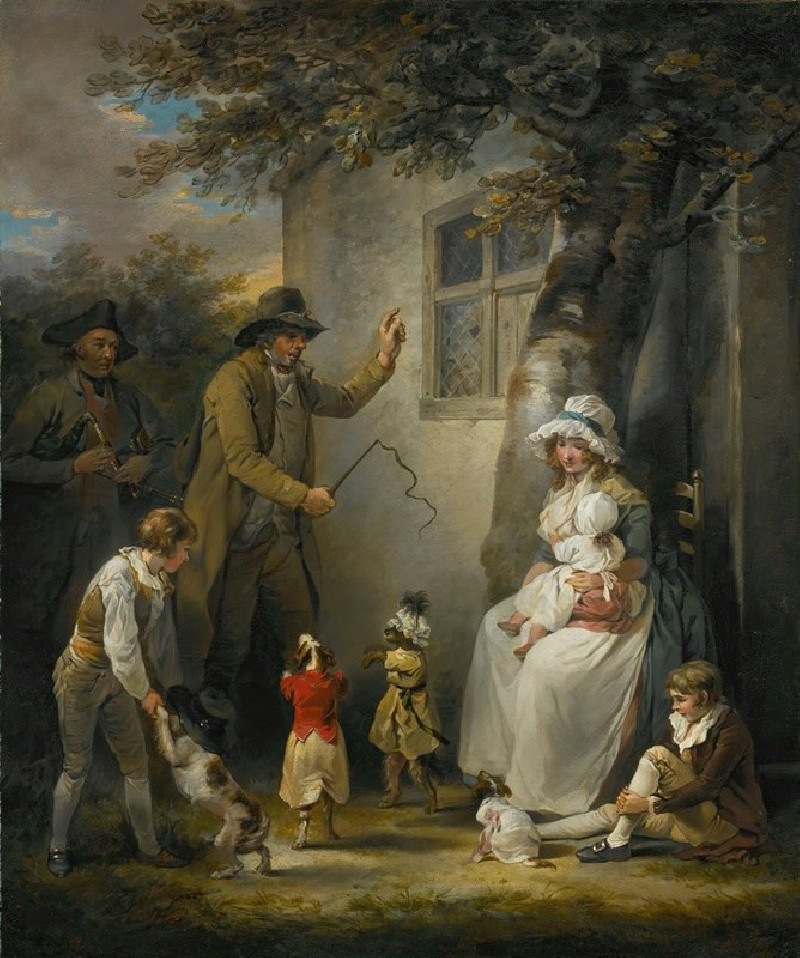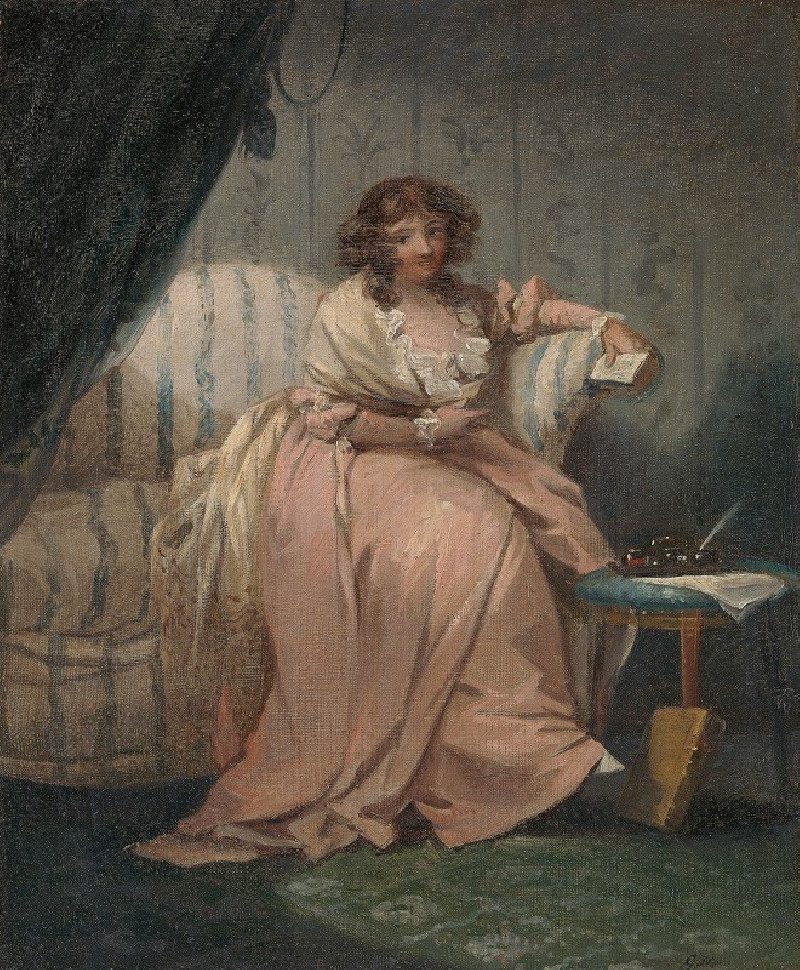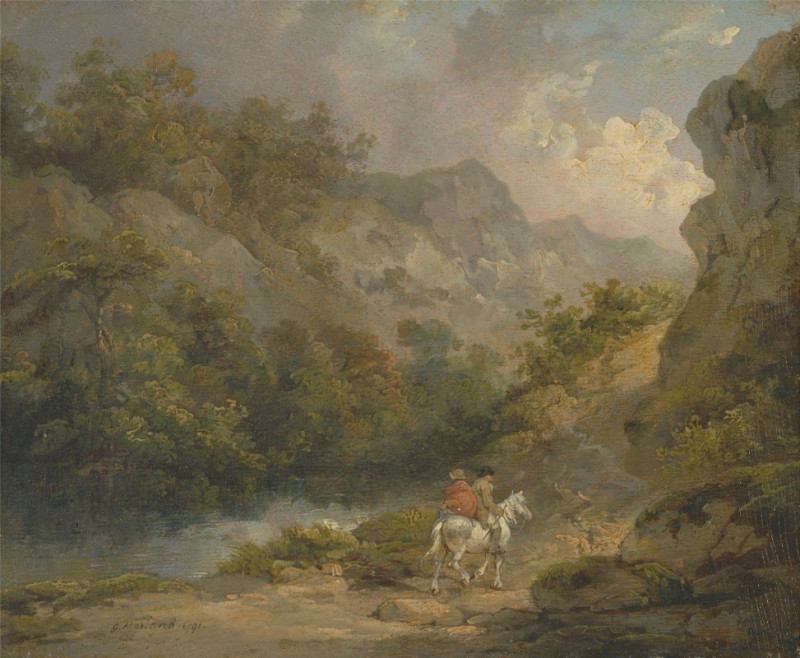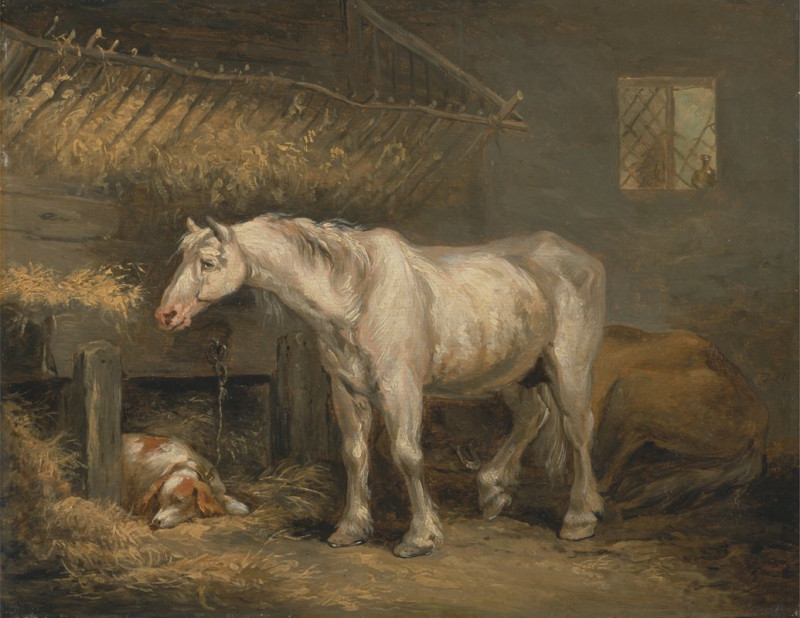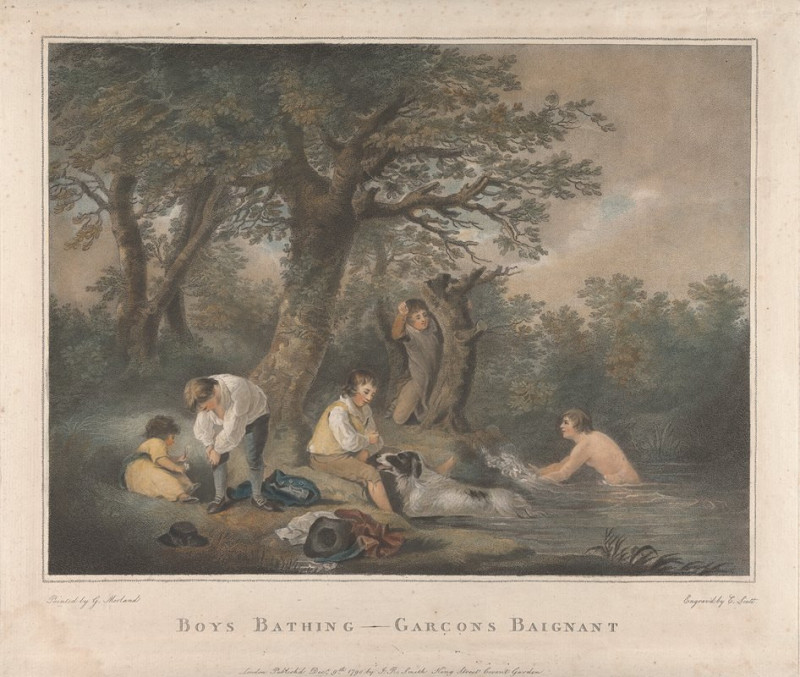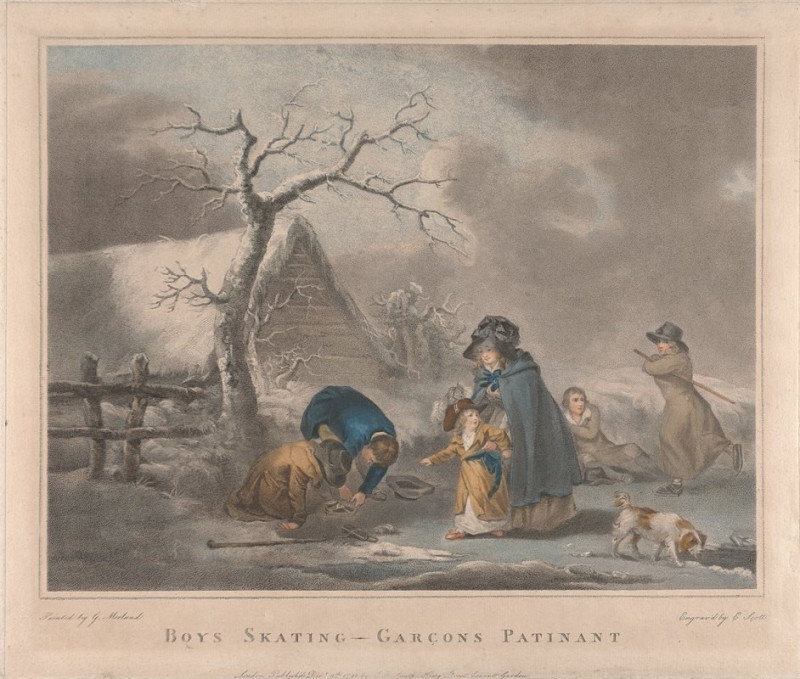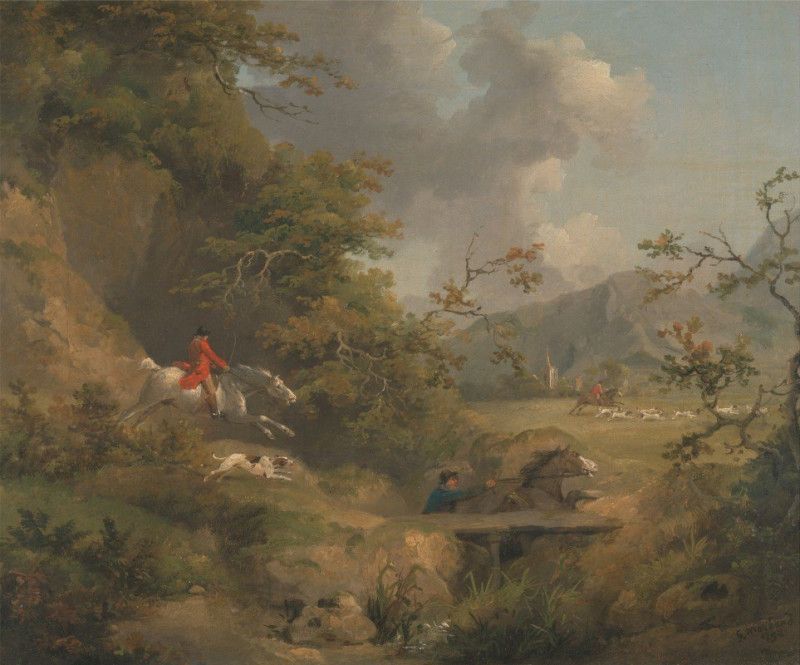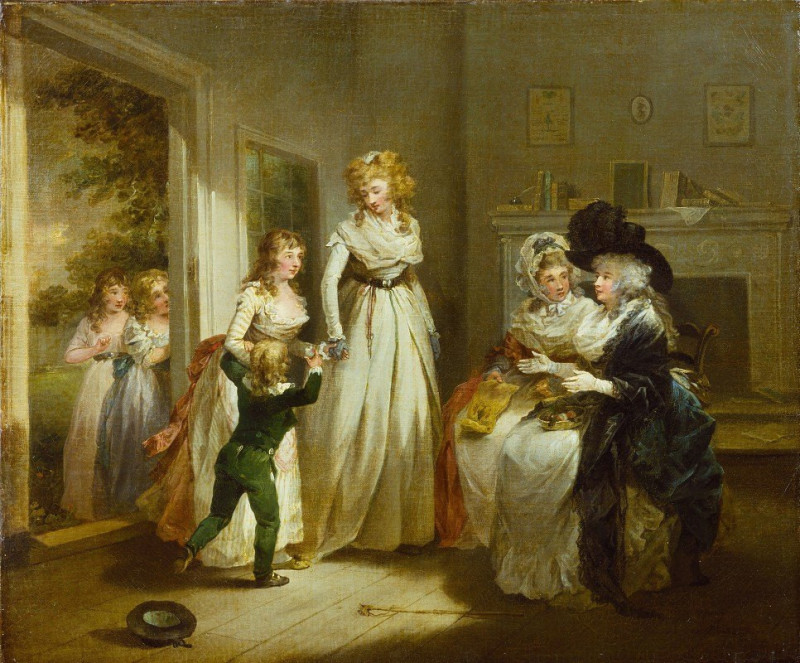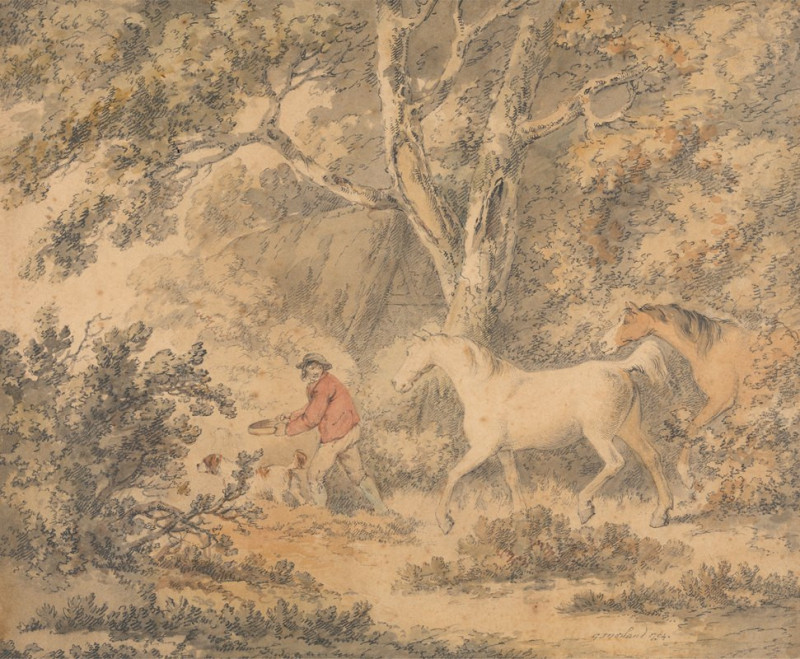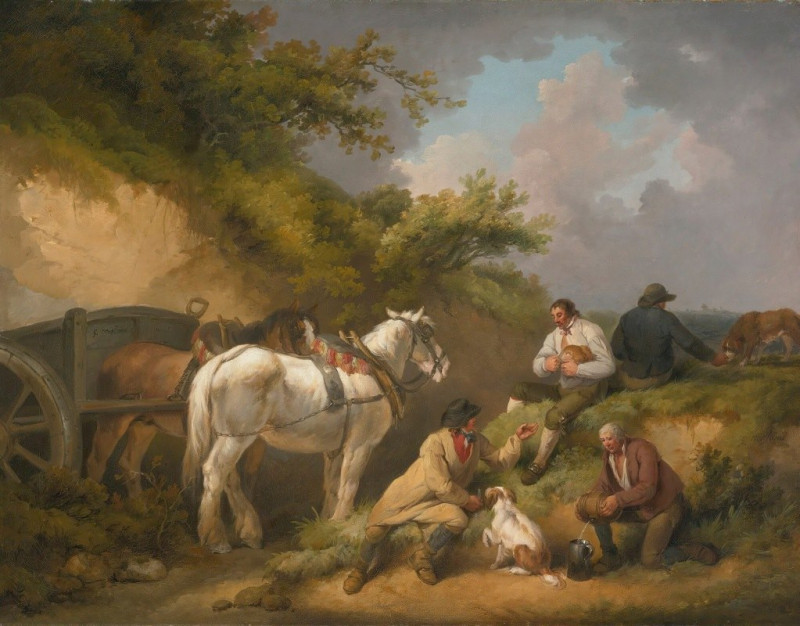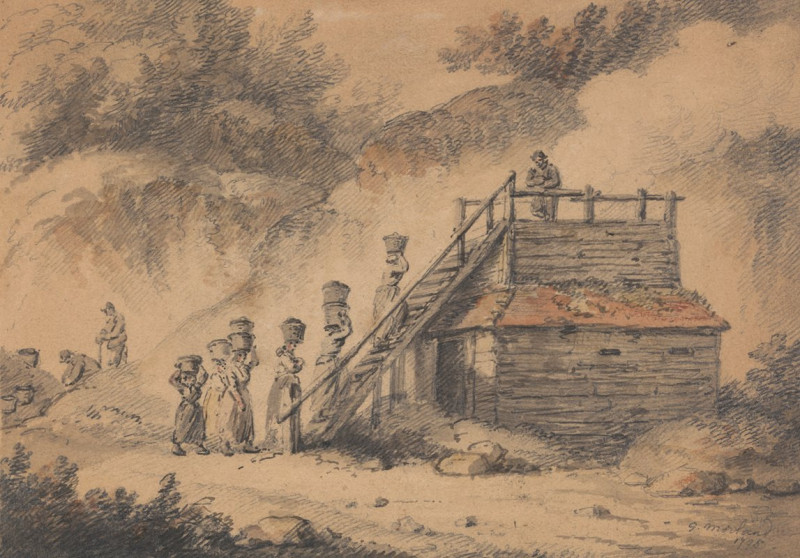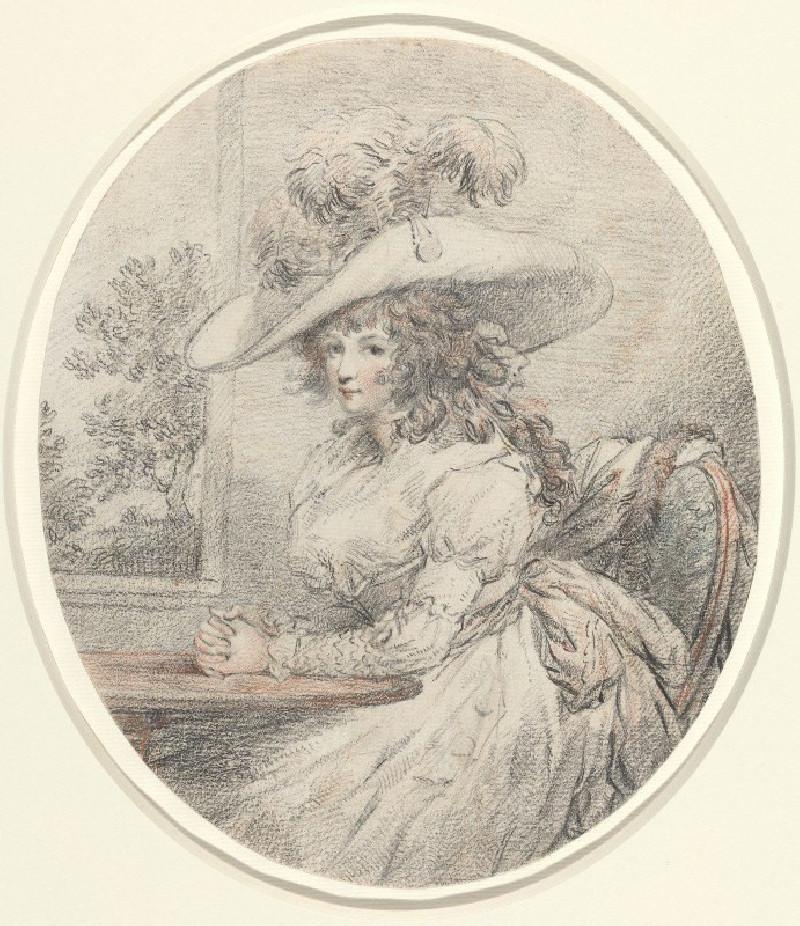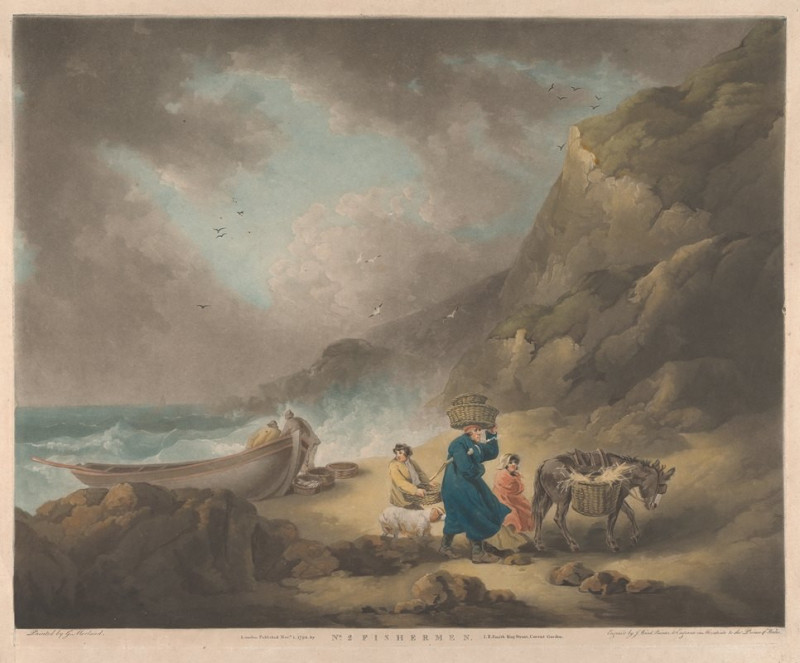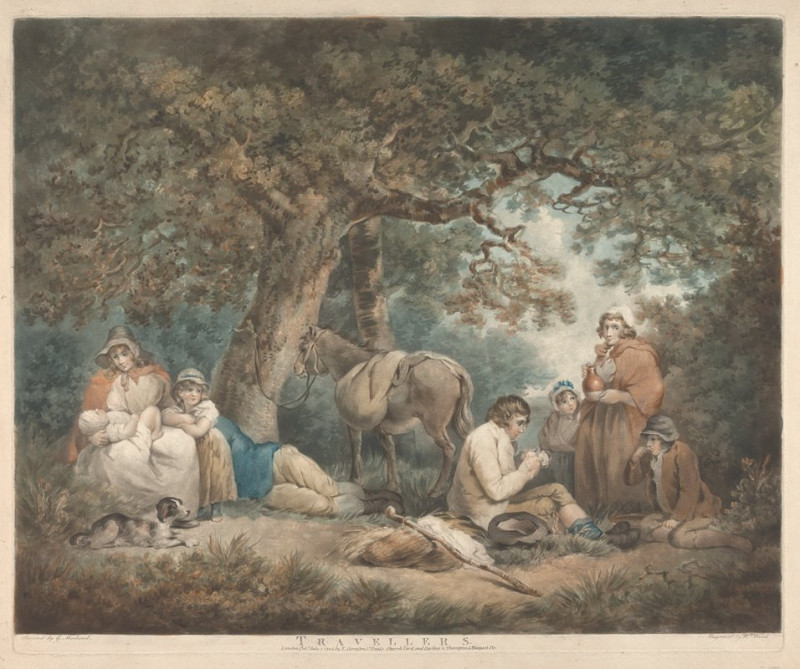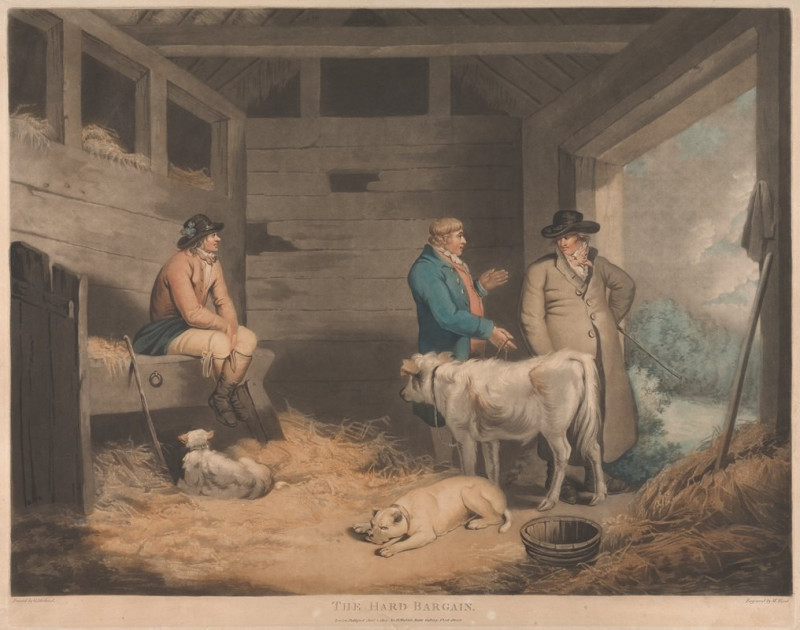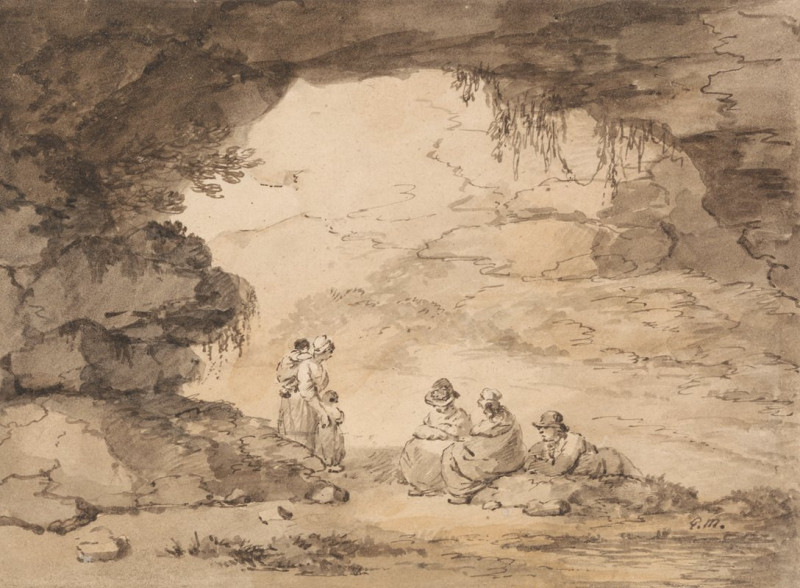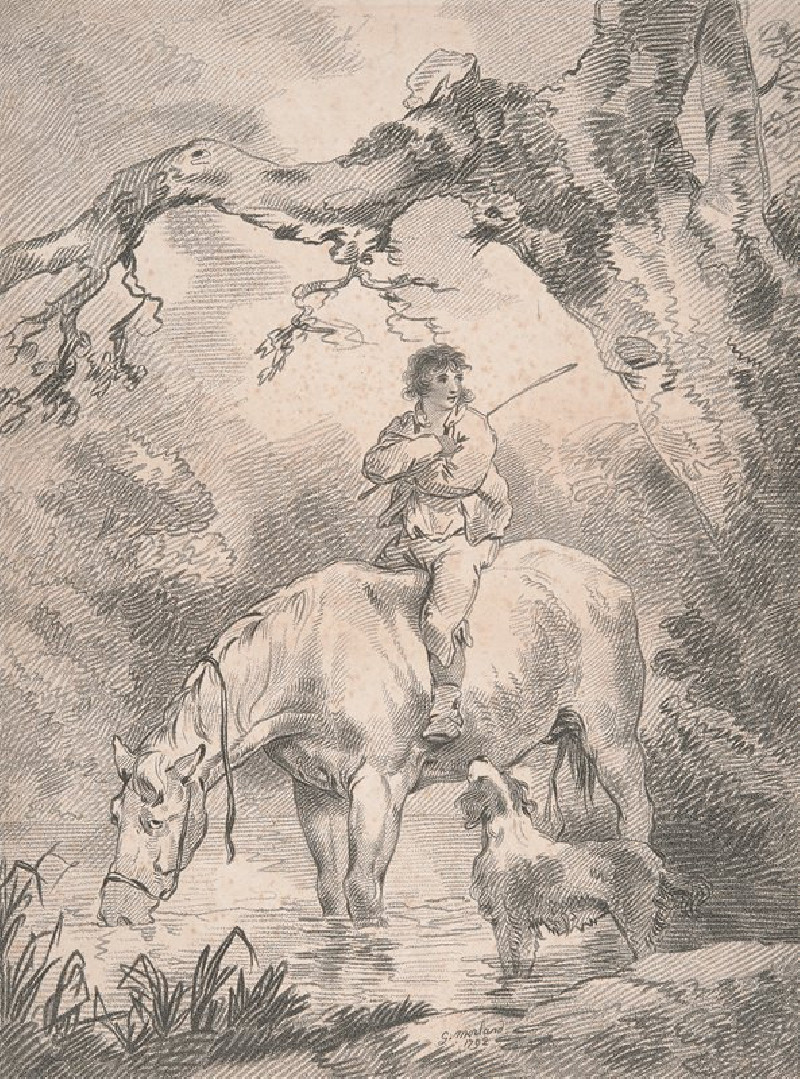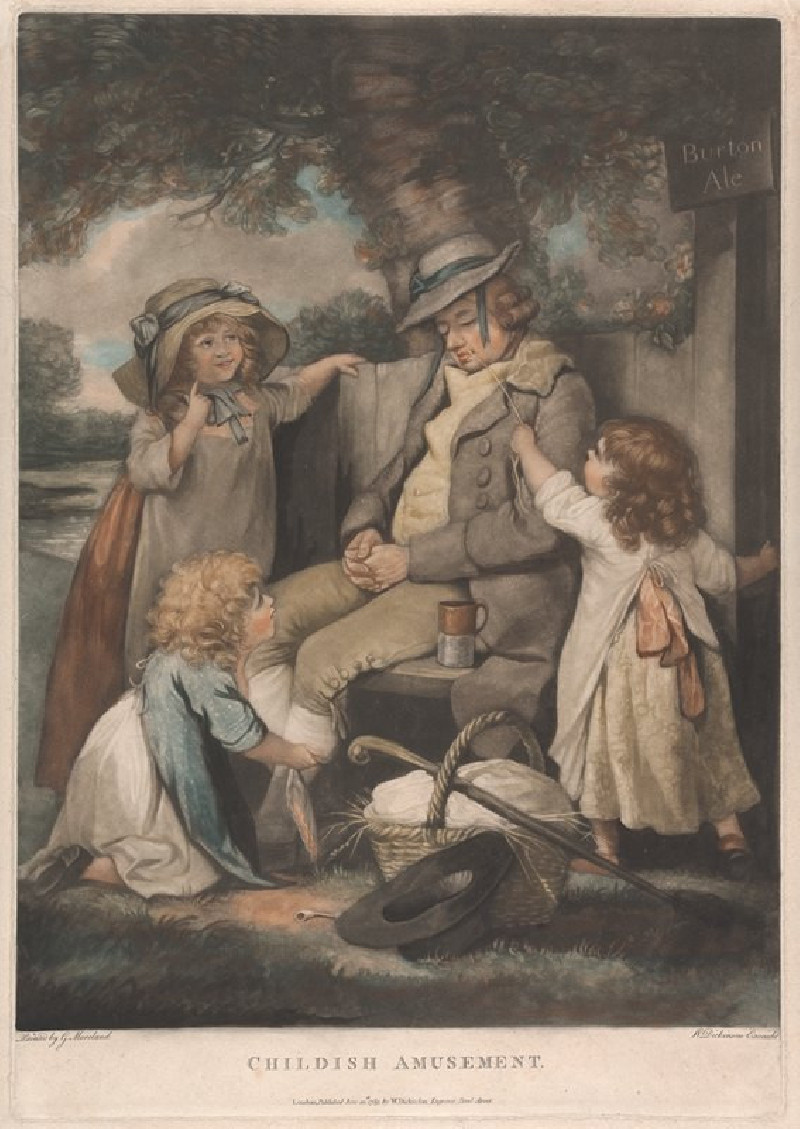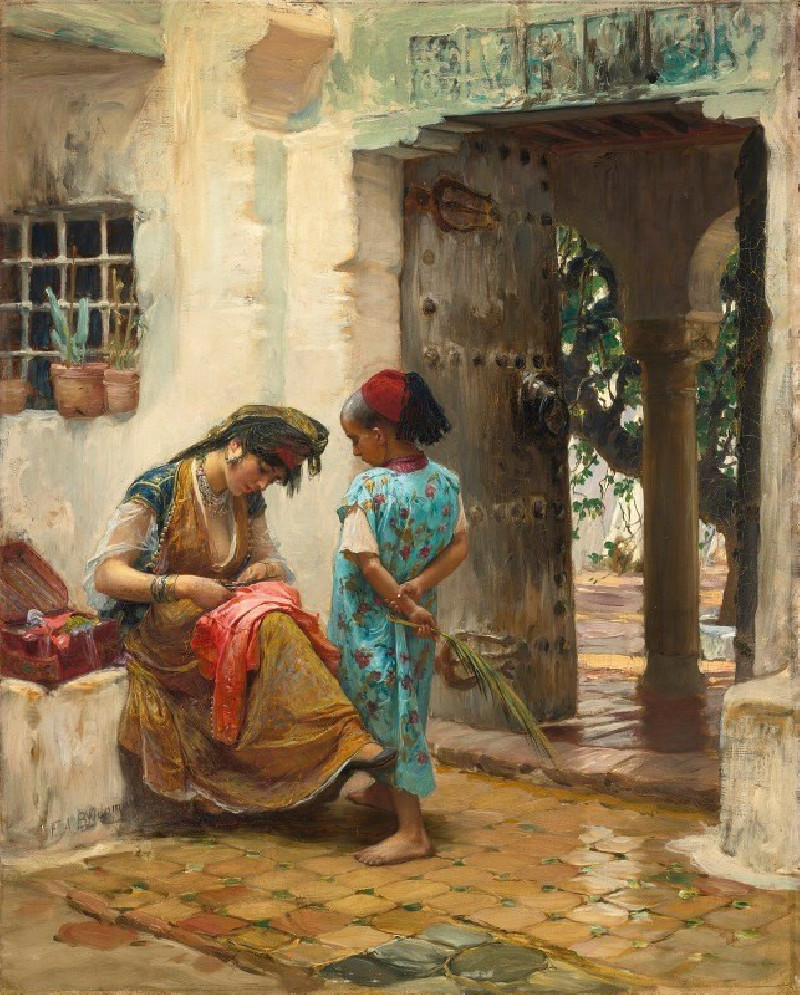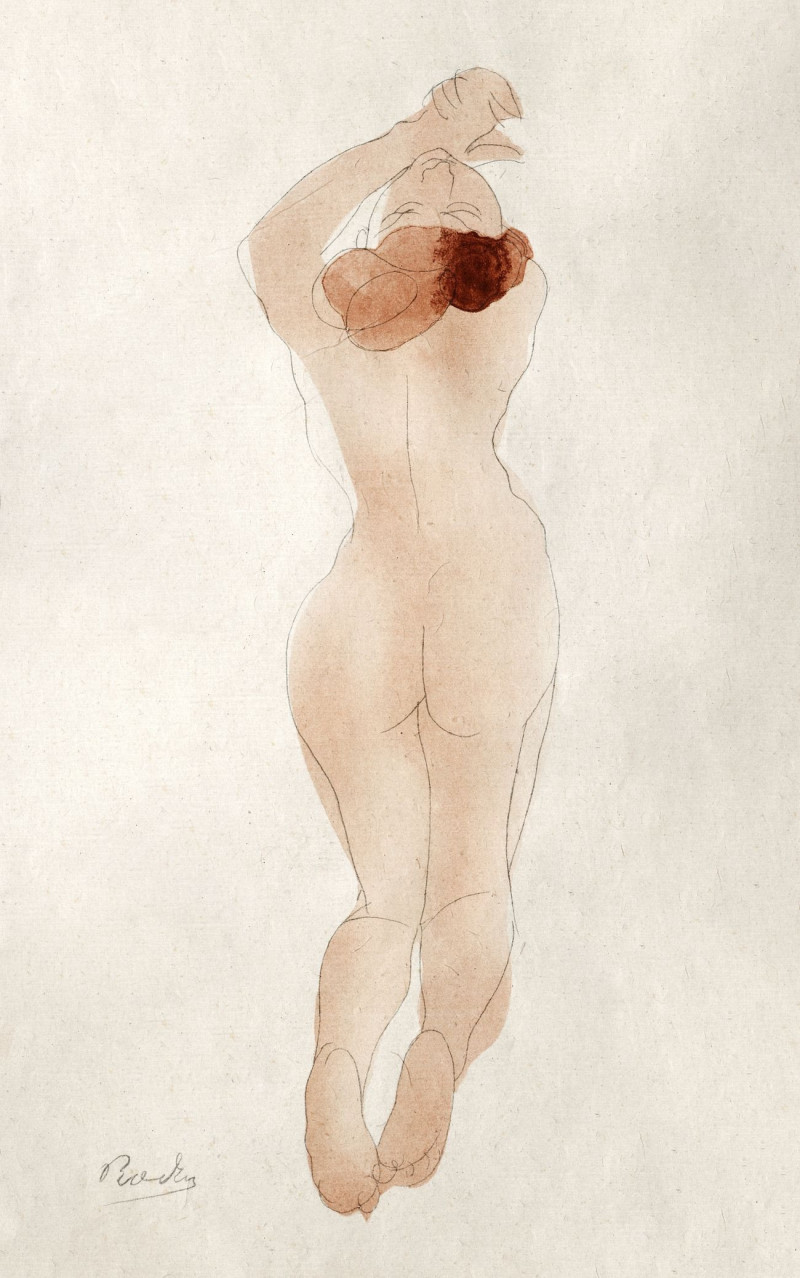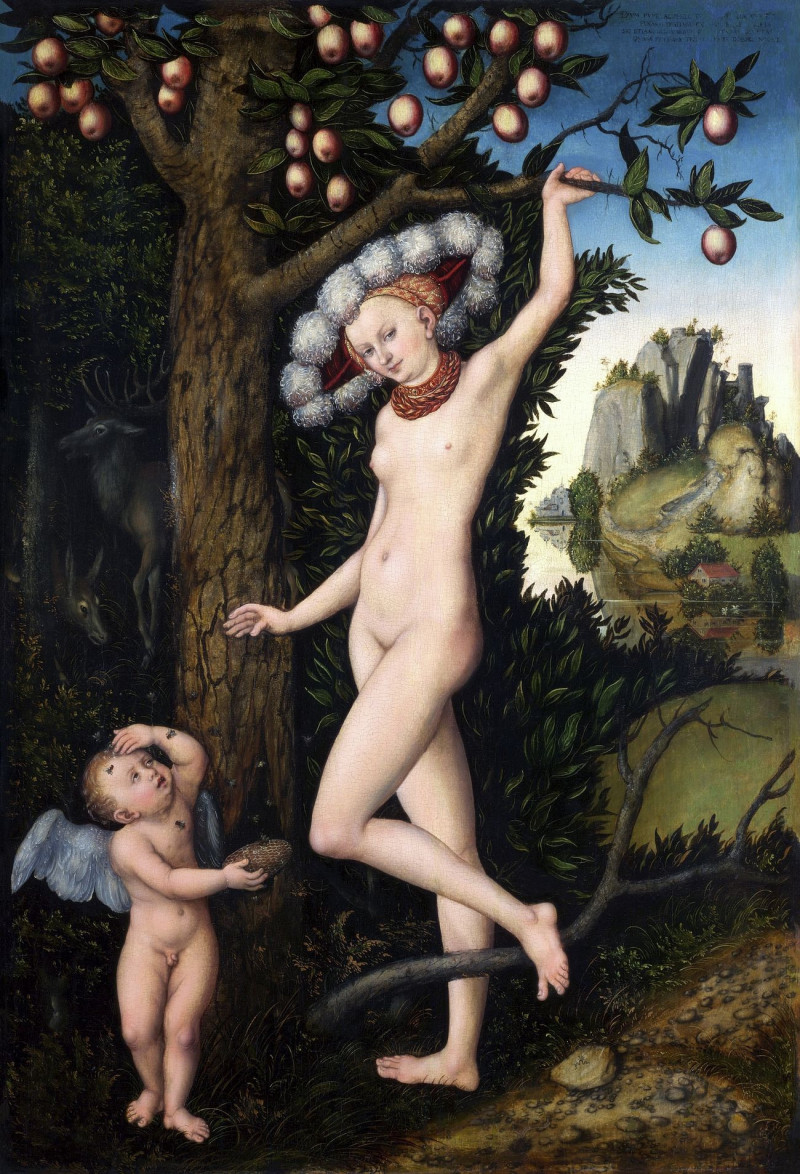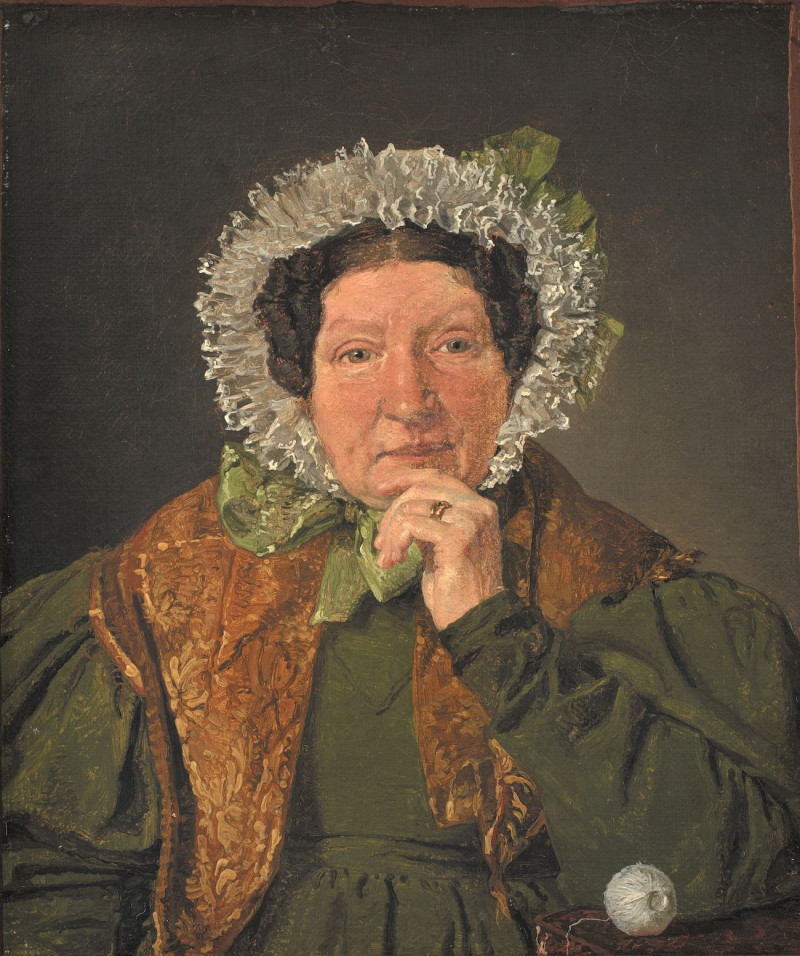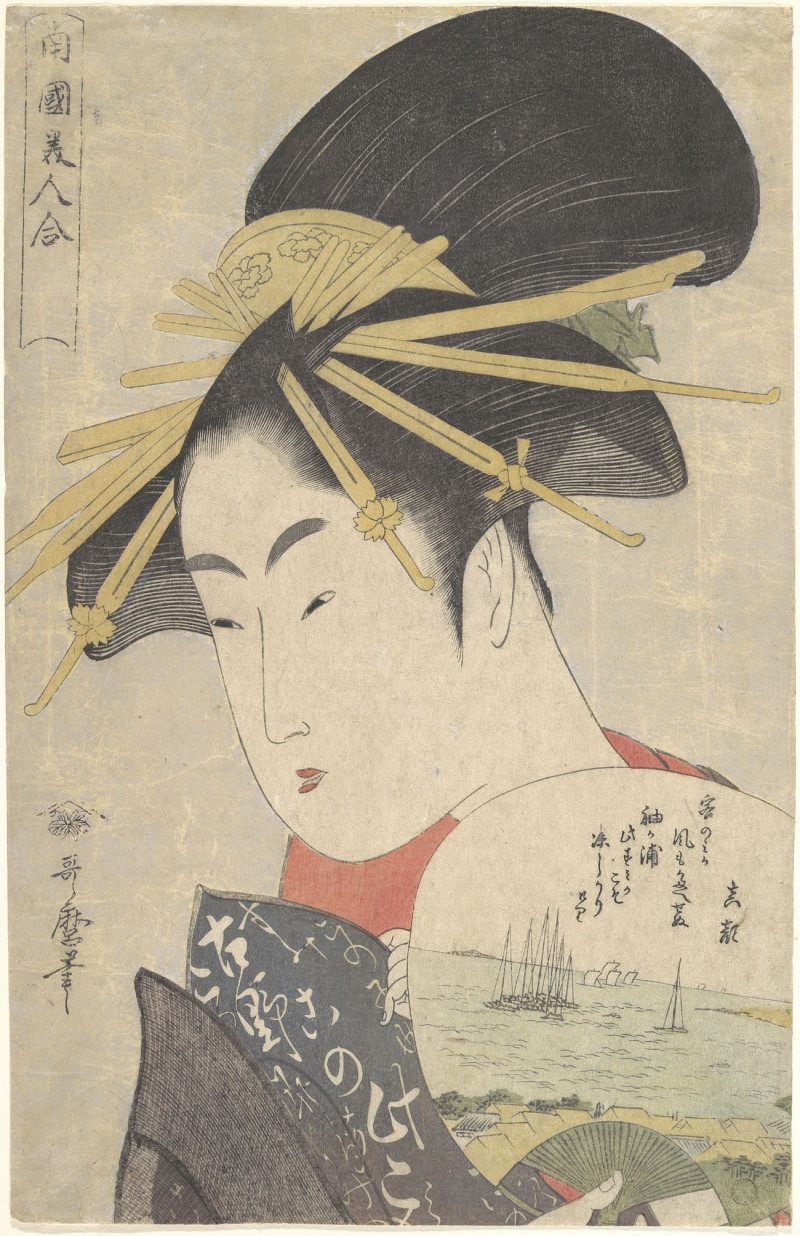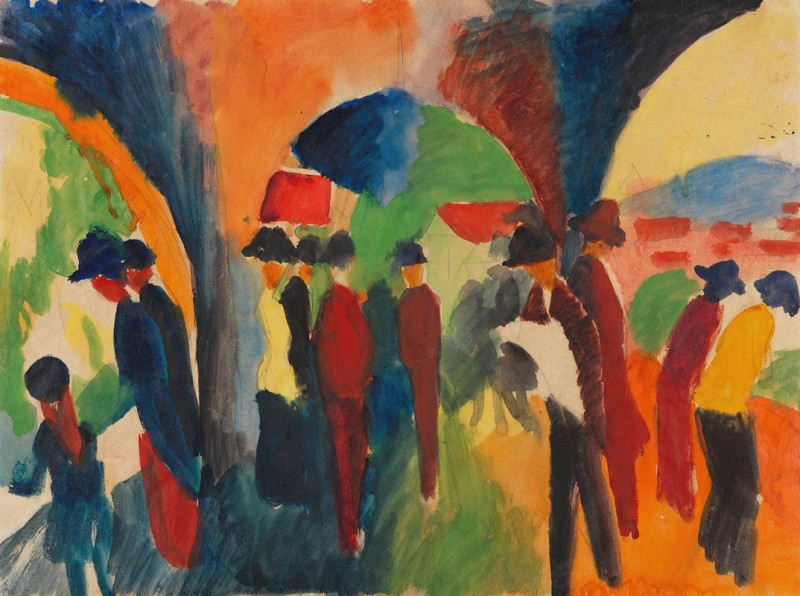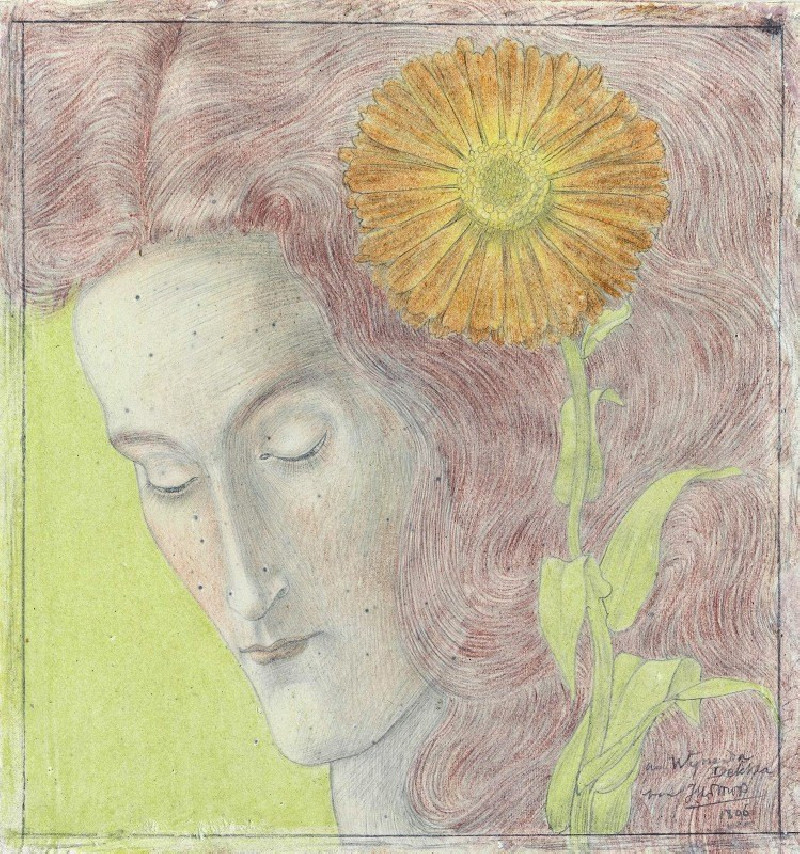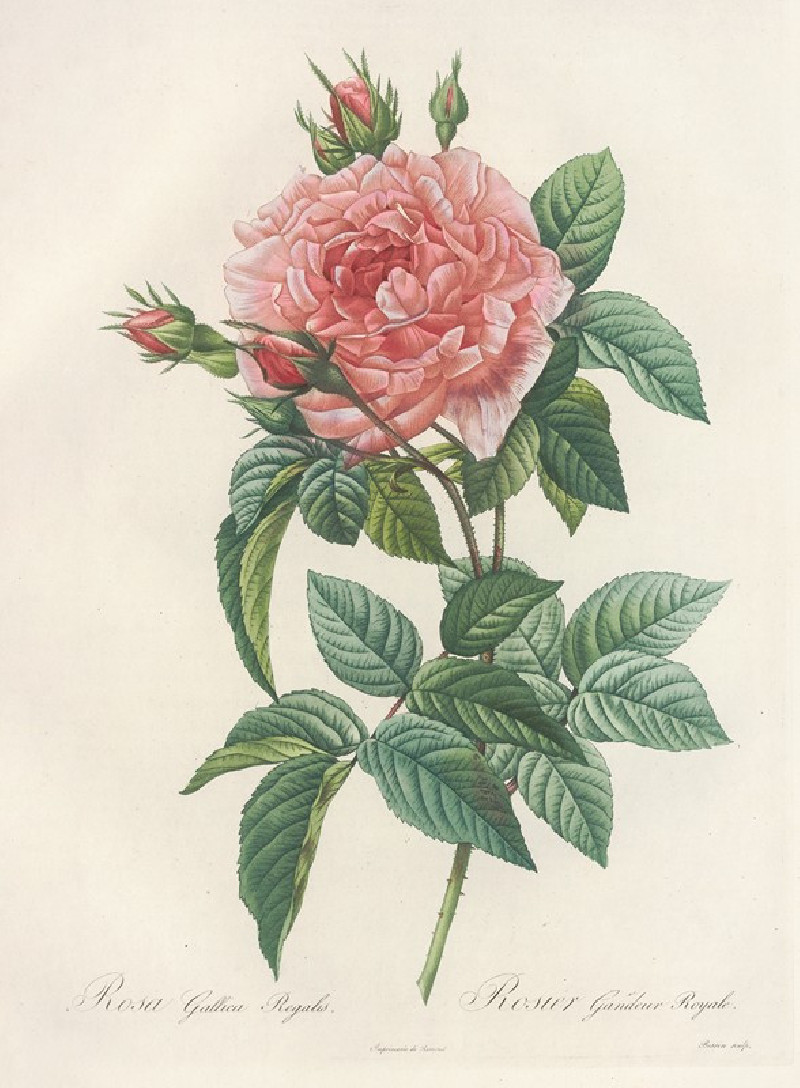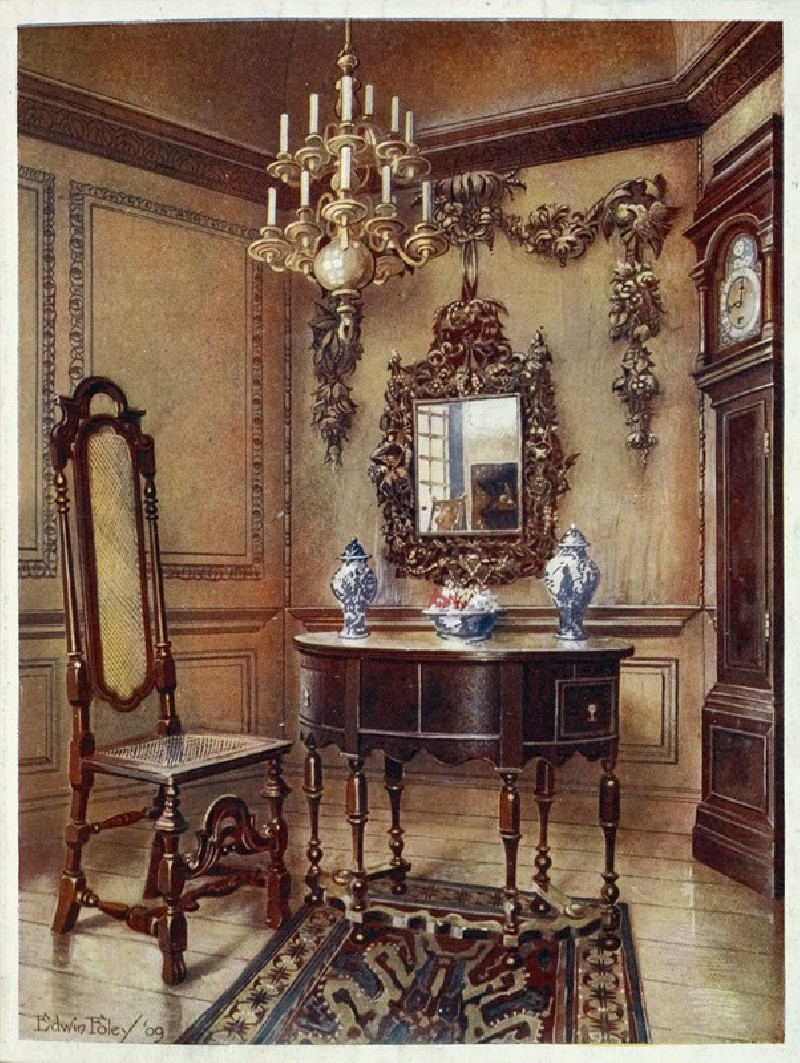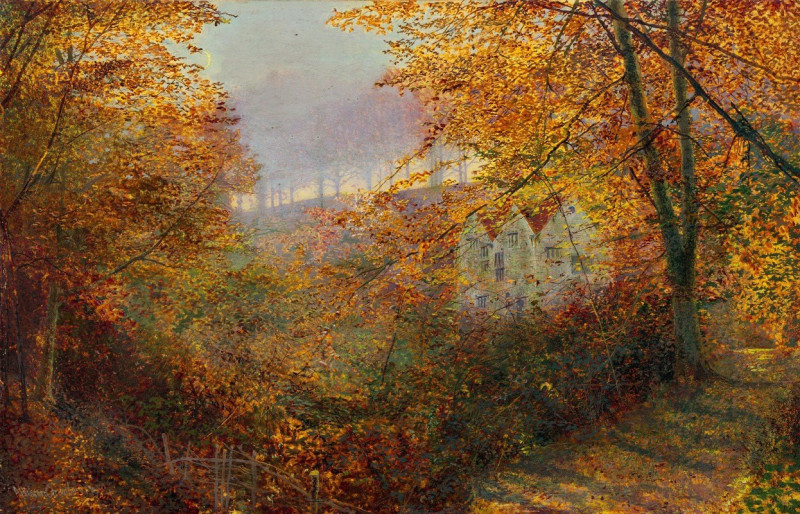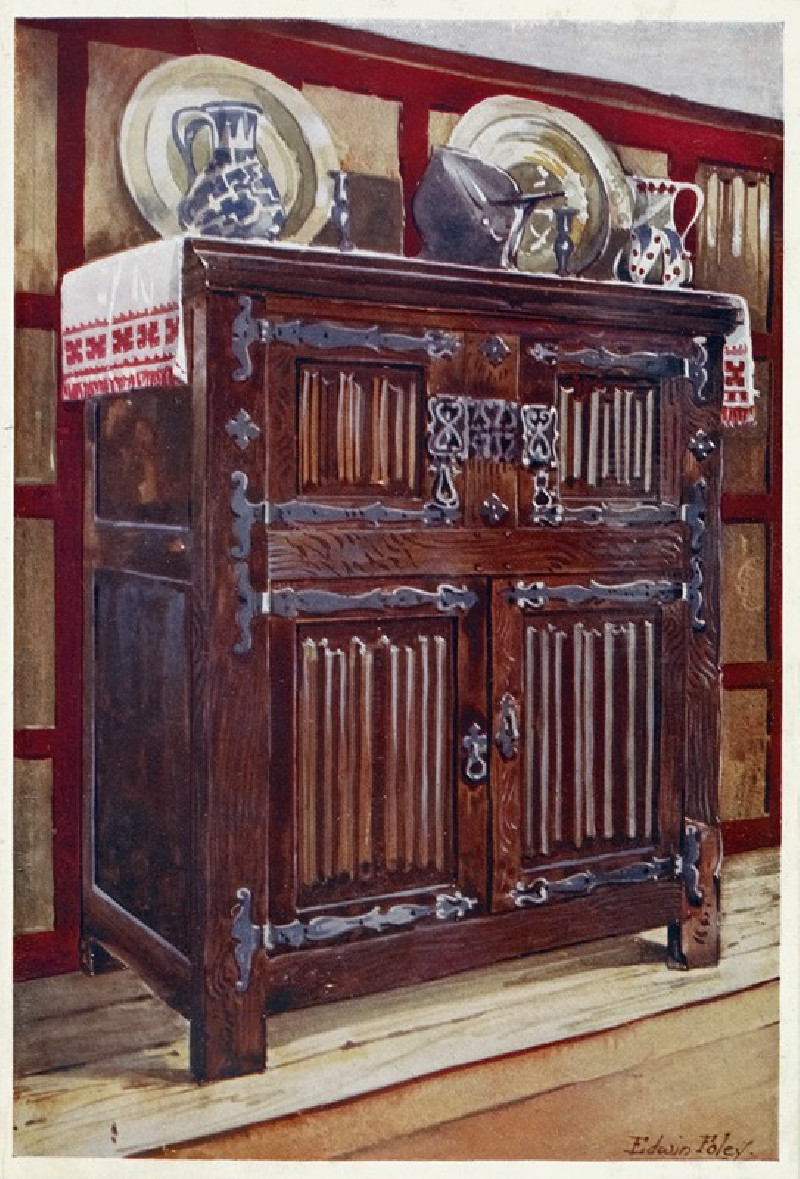The Last Litter (1803)
Technique: Giclée quality print
Recommended by our customers
More about this artwork
The painting "The Last Litter" (1803) by George Morland masterfully captures a serene, though poignant, moment in rural English life. The scene takes place beside a thatched cottage, enveloped in the calm hues of nature, setting a tranquil rural stage.Central to the painting is a sow tending to her piglets, imbuing the scene with a sense of nurturing continuity and rustic charm. These pigs, likely representing the last litter of the season, are a focal point around which daily farm life revolves. To the left, a man wearing attire typical of the early 19th-century rural worker stands watch. His open waistcoat and soft hat suggest ease and familiarity with his environment, hinting at the daily rhythms of farm labor and its integral connection to nature.Beside him, a young girl, her face alight with youth and perhaps curiosity, holds a basket, perhaps preparing to feed the pigs or carry away needed supplies. Her presence injects a touch of innocence and the passing of traditional roles and knowledge between generations into the scene.This artwork not only depicts the bucolic lifestyle but also invites viewers to reflect on themes of sustainability, family, and the cyclical nature of life. Morland’s use of soft, naturalistic colors and attentive detail to texture—like the thatching of the cottage and the foliage around—enhances the timeless quality of rural life, encouraging a contemplative appreciation from its viewers.
Delivery
Returns
George Morland (26 June 1763 – 29 October 1804) was an English painter. His early work was influenced by Francis Wheatley, but after the 1790s he came into his own style. His best compositions focus on rustic scenes: farms and hunting; smugglers and gypsies; and rich, textured landscapes informed by Dutch Golden Age painting.

